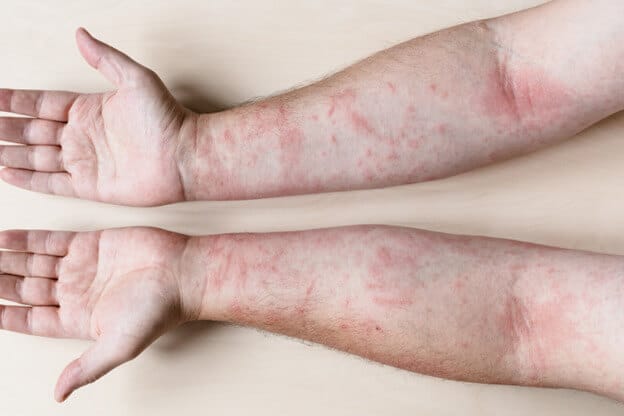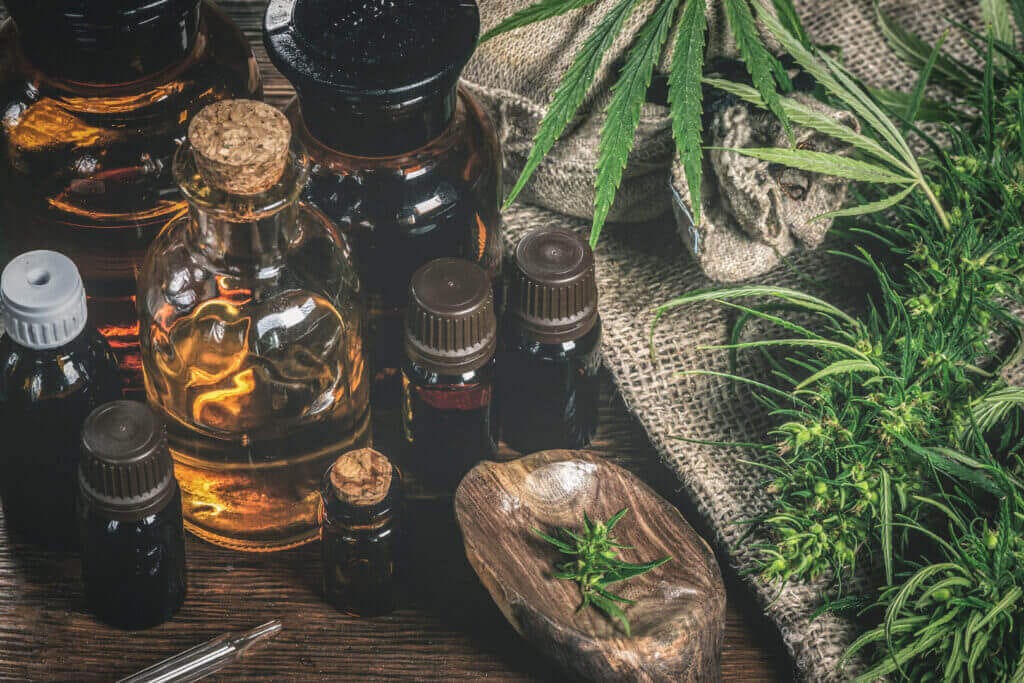
There are many skin conditions people suffer with worldwide, as well as many ways to address the symptoms and side effects they cause. One of the most common skin conditions is known as contact dermatitis. Contact dermatitis is a common skin condition that occurs when the skin comes into contact with an irritant or an allergen.

This condition can cause a significant disruption to your daily life and is known for causing inflammation, redness, itching, and sometimes blisters or rashes. Contact dermatitis can be acute or chronic, depending on the duration and frequency of exposure to the trigger. Contact dermatitis can become a lifelong nuisance for those with triggers that are more common in day-to-day life, or that they cannot avoid. This condition can affect anyone, but some people are more prone to it than others due to aspects such as genetic factors, environmental factors, or underlying medical conditions.

Contact dermatitis can be caused by a variety of substances that irritate or sensitize the skin. Some of the most common triggers are:
• Cosmetics
• Detergents
• Fragrances
• Latex
• Medications
• Metals
• Plants
• Rubber
The symptoms of contact dermatitis vary depending on the type and severity of the reaction. Some of the typical symptoms are:
• Blisters
• Burning
• Crusting
• Dryness
• Itching
• Redness
• Scaling
• Swelling
Contact dermatitis can affect the skin on any part of the body. Most commonly, though, this condition occurs on the hands, face, neck, and arms. This can interfere with daily activities, such as work, school, or social interactions. It can also cause emotional distress, such as anxiety, depression, and low self-esteem. This is especially true in chronic cases of contact dermatitis, where the patient encounters flare-ups and symptoms on a more continuous basis.

One of the most common treatments for contact dermatitis is topical steroid creams or ointments. These are applied to the affected area to reduce inflammation and itching. They can be effective for mild to moderate cases, but they should not be used for more than two weeks without medical supervision. Some of the possible risks of using steroid creams include:
Another treatment option for contact dermatitis is oral or injectable steroids. These options are usually for severe or widespread cases that do not respond to topical steroids. These are medications that suppress your immune system and reduce inflammation throughout your body. They can be effective for short-term use, but they have more serious risks and side effects than topical steroids. Some of the possible risks of using oral or injectable steroids include an increased risk of developing osteoporosis, diabetes, high blood pressure, infections, and experiencing things such as mood changes, anxiety, irritability, and weight gain.
Other treatments for contact dermatitis may include antihistamines, ultraviolet light therapy, or immunosuppressants. These may have different benefits and risks depending on your individual situation. For those who prefer the more holistic approach, let’s dive into some of the natural remedies for contact dermatitis.

While there is controversy surrounding coconut oil and the skin, which we wrote a whole article about, when the right product is used, this oil can offer many benefits. Coconut oil can not only protect your skin from aspects such as irritants and allergens, but it can also help to nourish and moisturize the skin as well. Coconut oil is also rich in antibacterial and antifungal properties that can prevent infections and reduce inflammation.
Vitamin E is a powerful antioxidant that can help to repair the damage caused by contact dermatitis. It can also soothe the itching and inflammation and improve the appearance of the skin. You can use vitamin E oil or capsules and apply vitamin E directly to the skin.
Green Tea is a rich antioxidant containing Quercetin and EGCG. Its anti-inflammatory properties may help to relieve contact dermatitis by reducing skin irritation, redness, and swelling. One study regarding Green tea and contact dermatitis found that “green tea extract has a positive effect for managing allergic contact dermatitis.”
Vitamin C has also been shown through research to potentially reduce symptoms of contact dermatitis. This ingredient can offer protective properties by both consuming it to reduce the risk as well as applying it to the skin in the event of a contact dermatitis flare-up.
Oatmeal is a soothing and moisturizing ingredient that can help to reduce itchiness, inflammation, and flakiness caused by contact dermatitis. You can add oatmeal to your bath water or make a paste with water and apply it to the affected area.
Aloe vera is a well-known natural remedy for various skin conditions, including contact dermatitis. It has cooling, anti-inflammatory, and anti-itching properties that can provide relief and promote healing. You can use pure aloe vera gel or mix it with honey, milk, and turmeric for extra benefits.

Cannabis is a plant that contains various compounds called cannabinoids, such as tetrahydrocannabinol (THC), cannabidiol (CBD), and cannabigerol (CBG), to name a few. It is widely documented that cannabis has been used for medicinal purposes for thousands of years by cultures globally. It could be because it has been shown to have beneficial effects for those living with various health conditions. Conditions such as chronic pain, epilepsy, multiple sclerosis, psoriasis, insomnia, anxiety, depression, loss of appetite, and much more. Cannabis is a very versatile plant that can be consumed in different ways, such as smoking, vaping, eating, or applying it topically. To learn more about this plant in-depth, check out our Plant Power Series! Read on to learn more about the benefits of cannabis for contact dermatitis.
Cannabinoids in cannabis, such as tetrahydrocannabinol (THC), cannabidiol (CBD), and cannabigerol (CBG), offer anti-inflammatory, anti-itching, and anti-pain effects on the skin.
Cannabis directly interacts with the endocannabinoid system, which helps regulate skin functions and immune responses. According to information online, some studies have suggested that topical application of THC can suppress allergic contact dermatitis in mice by activating CB1 receptors. Other cannabinoids, such as CBD and cannabigerol CBG, may also have anti-inflammatory and anti-microbial properties that could benefit skin conditions, including contact dermatitis.
In addition to the skin benefits, cannabis also offers many benefits to those suffering from anxiety and depression, which is common with chronic contact dermatitis patients. This is yet another way that this plant may provide relief to those with this condition.

While cannabis may offer many benefits for this condition, it is also important to note that it can also cause it. This is especially true if someone is sensitive to other plants or foods that have similar proteins to cannabis. Some of the symptoms of cannabis allergy include redness, swelling, itching, burning, and more.
Recently, a friend of our founder, Mandy, experienced this while working in a trimming environment at the local dispensary. Upon noting this reaction, Mandy went straight to her fanny pack for some of her potent Gold Serum samples to help! Within just a short time, the botanical goodness, including CBD and CBG in this formula, went to work, and relief was found! Check out the pics below for before and after!

Do you have contact dermatitis? Do you experience random rashes, itchiness, and redness? If you answered yes, we invite you to grab a bottle of our infamous Gold Serum or our Hyaluronic and Vitamin C infused White Water Serum, both include the powers of CBD and CBG! We can’t wait for you to experience the magic of the products offered here at Potency No. 710!